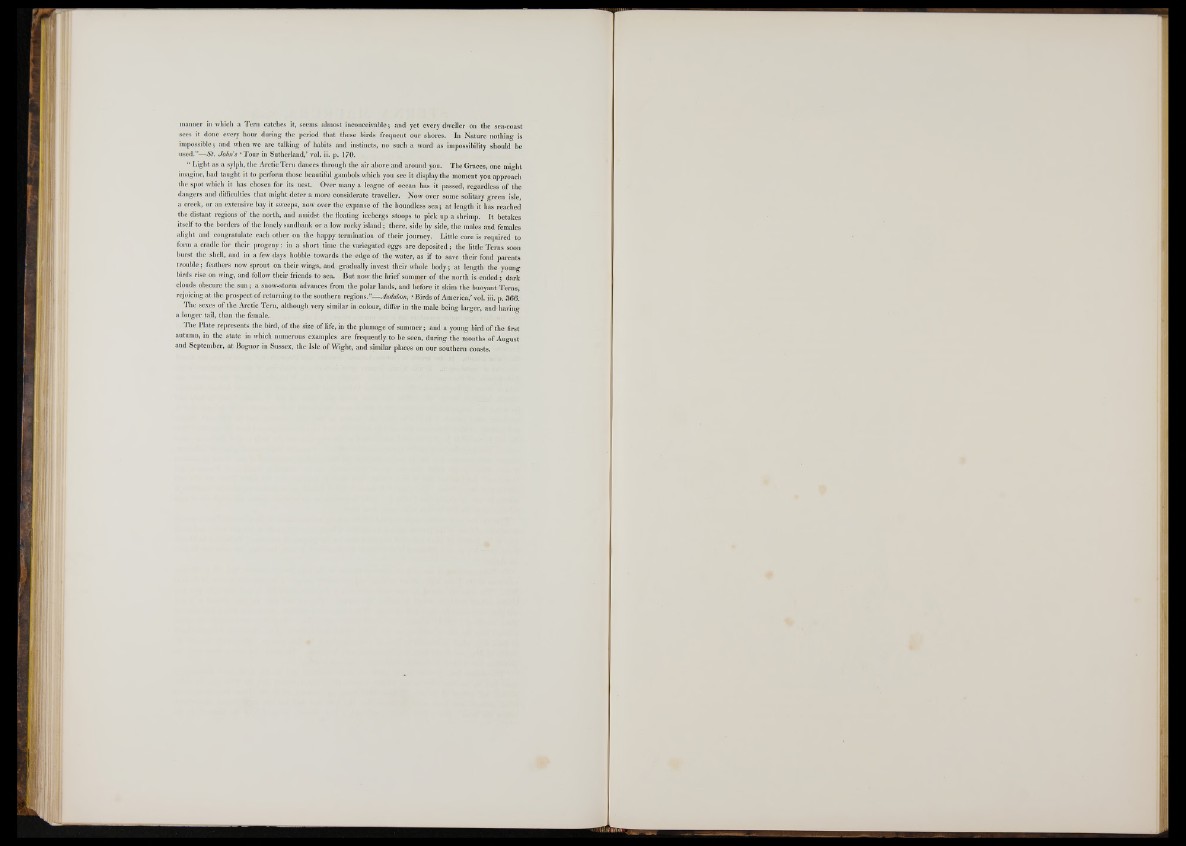
manner in which a Tern catches it, seems almost inconceivable; and yet every dweller on the sea-coast
sees it done every hour during the period that these birds frequent our shores. In Nature nothing is
impossible; and when we are talking o f habits and instincts, no such a word as impossibility should be
used.”—St. John’s ‘Tour in Sutherland,’ vol. ii. p. 170.
“ Light as a sylph, the Arctic Tern dances through the air above and around you. The Graces, one might
imagine, had taught it to perform those beautiful gambols which you see it display the moment you approach
the spot which it has chosen for its nest. Over many a league o f ocean has it passed, regardless o f the
dangers and difficulties that might deter a more considerate traveller. Now over some solitary green isle,
a creek, or an extensive bay it sweeps, now over the expanse o f the boundless sea; at length it has reached
the distant regions o f the north, and amidst the floating icebergs stoops to pick up a shrimp. It betakes
itself to the borders of the lonely sandbank or a low rocky island; there, side by side, the males and females
alight and congratulate each other on the happy termination o f their journey. Little care is required to
form a cradle for their progeny: in a short time the variegated eggs are deposited; the little Terns soon
burst the shell, and in a few days hobble towards the edge o f the water, as if to save their fond parents
trouble; feathers now sprout on their wings, and gradually invest their whole body; at length the young
birds rise on wing, and follow their friends to sea. But now the brief summer o f the north is ended; dark
clouds obscure the sun; a snow-storm advances from the polar lands, and before it skim the buoyant Terns,
rejoicing at the prospect o f returning to the southern regions/’—Audubon, ‘ Birds o f America/ vol. iii. p. 366.
The sexes o f the Arctic Tern, although very similar in colour, differ in the male being larger, and having
a longer tail, than the female.
The Plate represents the bird, o f the size o f life, in the plumage o f summer; and a young bird o f the first
autumn, in the state in which numerous examples are frequently to be seen, during the months o f August
and September, at Bognor in Sussex, the Isle o f Wight, and similar places on our southern coasts.